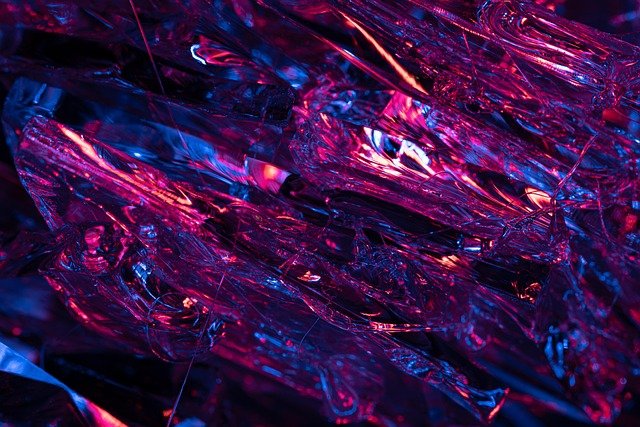Kaleidoscope Interiors: The Art of Prismatic Design
Color, light, and reflection converge in the mesmerizing world of kaleidoscope-inspired interiors. This avant-garde design trend transforms living spaces into dynamic, ever-changing environments that captivate the senses and challenge traditional notions of static decor. By harnessing the principles of kaleidoscopic patterns and light play, homeowners can create spaces that are both visually stunning and emotionally uplifting.

The Origins of Kaleidoscopic Design
The concept of kaleidoscopic design draws inspiration from the optical instrument invented by Scottish physicist Sir David Brewster in 1816. The kaleidoscope, with its ability to create intricate, symmetrical patterns from simple objects and fragments, captivated the imagination of artists and designers for centuries. In recent years, this fascination has evolved into a full-fledged interior design movement, blending the mesmerizing qualities of kaleidoscopes with modern aesthetics and technology.
Early adopters of this style began by incorporating kaleidoscope-inspired patterns into textiles and wallpapers. As the trend gained momentum, designers started experimenting with more immersive applications, using innovative materials and lighting techniques to create truly transformative spaces.
Key Elements of Kaleidoscope Interiors
At the heart of kaleidoscope interiors lies the interplay of color, light, and reflection. Designers achieve this effect through a variety of methods:
-
Prismatic surfaces: Walls, ceilings, and floors adorned with iridescent tiles, holographic wallpapers, or dichroic films that change color depending on the viewing angle.
-
Reflective elements: Strategically placed mirrors, metallic accents, and crystal objects that multiply and refract light throughout the space.
-
Geometric patterns: Intricate, symmetrical designs reminiscent of kaleidoscope views, incorporated into flooring, wall art, and textiles.
-
Dynamic lighting: Programmable LED systems that can shift colors and patterns, creating an ever-changing ambiance.
-
Transparent and translucent materials: Glass, acrylic, and other see-through elements that allow light to play and interact within the space.
Creating a Kaleidoscope-Inspired Living Room
To illustrate the practical application of kaleidoscope interiors, let’s explore how to transform a living room using this innovative design approach:
-
Start with a neutral base: Paint walls and ceilings in a light, neutral color to serve as a canvas for the kaleidoscopic elements.
-
Install a statement ceiling: Apply a large-scale, geometric patterned wallpaper with metallic or iridescent accents to the ceiling. This creates a stunning focal point and reflects light throughout the room.
-
Incorporate prismatic window films: Apply dichroic window films to select windows or glass partitions. These films change color based on the angle of light, casting vibrant, shifting hues across the space.
-
Select reflective furniture: Choose coffee tables, side tables, or shelving units with mirrored or high-gloss surfaces to amplify the light play in the room.
-
Add kaleidoscope-inspired textiles: Introduce throw pillows, rugs, and curtains featuring geometric patterns and iridescent threads that catch and reflect light.
-
Install smart lighting: Implement a programmable LED lighting system that can change colors and create patterns, allowing you to transform the ambiance of the room at will.
-
Accessorize with crystal and glass: Display crystal objects, prisms, or stained glass pieces that refract light and create miniature rainbows throughout the space.
The Psychology of Kaleidoscope Interiors
Beyond their visual appeal, kaleidoscope interiors can have a profound impact on mood and well-being. The ever-changing nature of these spaces stimulates the mind and encourages a sense of wonder and creativity. The play of light and color can also have therapeutic effects, potentially reducing stress and enhancing overall mood.
Research in color psychology suggests that exposure to a variety of hues can positively influence emotional states. In a kaleidoscope interior, the shifting colors and patterns create a dynamic environment that can adapt to different moods and activities throughout the day.
Balancing Boldness with Functionality
While the allure of kaleidoscope interiors is undeniable, it’s essential to strike a balance between visual excitement and practical livability. Here are some tips for creating a kaleidoscope-inspired space that remains functional and comfortable:
-
Focus on key areas: Rather than applying the concept to an entire home, consider creating kaleidoscopic focal points in specific rooms or areas.
-
Use neutral zones: Balance high-impact kaleidoscopic elements with neutral spaces that allow the eye to rest and provide visual contrast.
-
Consider adjustable features: Implement movable panels, adjustable lighting, or interchangeable decor elements that allow you to modify the intensity of the kaleidoscopic effect as desired.
-
Prioritize comfort: Ensure that seating, bedding, and other essential furnishings prioritize comfort and functionality alongside visual appeal.
-
Plan for longevity: While trends come and go, invest in high-quality, timeless pieces that can adapt to changing styles over time.
The Future of Kaleidoscope Interiors
As technology continues to advance, the possibilities for kaleidoscope interiors are expanding. Emerging trends in this space include:
-
Interactive surfaces: Touch-sensitive walls and floors that respond to movement, creating personalized kaleidoscopic displays.
-
Augmented reality integration: AR technology that overlays digital kaleidoscope patterns onto physical spaces, allowing for infinite customization.
-
Biomimetic designs: Kaleidoscope patterns inspired by natural phenomena, such as butterfly wings or peacock feathers, bringing an organic touch to the aesthetic.
-
Sustainable materials: Eco-friendly options for creating prismatic effects, including recycled glass and biodegradable holographic films.
-
Therapeutic applications: The development of kaleidoscope rooms for meditation, stress relief, and sensory therapy in both residential and commercial settings.
Embracing the Kaleidoscope Revolution
Kaleidoscope interiors represent a bold step into the future of home design, challenging our perceptions of space and light. By embracing this innovative approach, homeowners can create living environments that are not just visually stunning, but emotionally engaging and adaptable to their changing needs and moods.
As we continue to explore the boundaries of interior design, kaleidoscope interiors stand out as a testament to the power of creativity and technology in transforming our living spaces. Whether implemented as subtle accents or full-room installations, this trend offers a unique opportunity to infuse homes with wonder, energy, and a touch of magic that changes with every glance.





